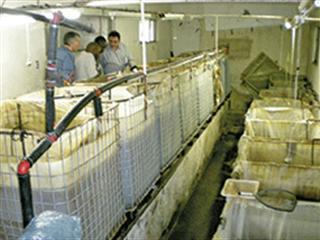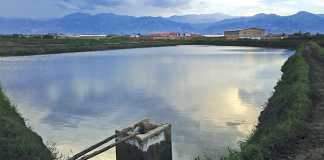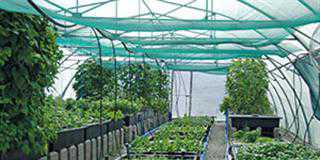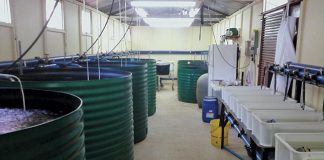
Every week I get enquiries from people wanting to start tilapia farming, but on a limited scale. “How can this be done without a large investment?” they ask. Most are smallholders with limited space. If you’re in this situation, one of the best ways to start out is by building a small re-circulating tunnel system. This makes even Highveld operations feasible, enabling you to grow tilapia during the warmer months, and allowing for their survival – but not growth – over winter.
Small greenhouse tunnels 10m to 15m long and 6m to 8m wide are readily available from local suppliers and should cost between R15 000 and R35 000. Homemade flat-sided tunnels aren’t recommended. Tunnel frames should always be curved, as this tensions the plastic evenly and stops flapping – a major source of rapid plastic failure. The plastic itself should always be the UV-stabilised kind. Ordinary polythene lasts only a few months in our hot sunshine. As to the system that goes inside, one non-negotiable is that there should be filtration for the fish, comprising at least 30% of the total volume of the grow-out tanks.
Clean water
Without filtration, the fish live in a ‘soup’ of their own making, and won’t grow, and may even die. The filtration equipment (more on this later) should be recessed into the ground so that the water flowing from the grow-out tanks passes gently through the filter by gravity. A small swimming pool pump of about 0,55kW is quite adequate for pumping the clean water back to the grow-out tanks, and will cost around R450/month to run.
With space at a premium, the more water surface that can be accommodated therein, the better utilised the tunnel is. Rectangular white plastic 1 000l tanks on a tubular-frame are available second-hand from several sources, often very cheaply. These have held liquid foodstuff and, once cleaned, make good grow-out tanks for starter systems. A series can be plumbed into the system, with a single row either side of a central walkway down the tunnel centre, and draining into 110mm toilet piping towards the filter.
Stocking levels
Such tanks are about 1m deep and can be stocked with 500 fingerlings each, thinned out to 50 to 75 large fish as they grow. Expect to harvest the fish at a mass of about 350g to 400g maximum. And keep stocking levels low enough to survive power cuts of several hours, unless you have a portable generator. About 20 of these tanks should fit in a 15m tunnel, with the filter at one end. The filter uses similar tanks, sunk into the ground.
Use two to three set up in series to catch the sediments and then four (in parallel) for the bio-filter, and a further one from which the pump draws. This latter tank should be fitted with a float valve to ensure that the system always stays full of water. Everything must be inside the tunnel to retain warmth in the water. Ideal filter material has a very large surface area. Gravel works well, but its weight makes it difficult to clean. Plastic shavings are excellent, as are shade cloth or giant bottle-brushes.
The bio-filter works by being colonised (after several weeks of running with fish in the system) by beneficial bacteria reducing dissolved ammonia products in the water to less toxic substances like nitrite. It does not work like a swimming pool filter! Pressure sand filters have no place in such a system. The sediment trap should have an initial tank fitted with cleanable screens that trap floating debris.
Such a starter system, costing less than R75 000, can produce 600kg to 1200kg of fish a year if well run. Selling the fish at R35/kg should then realise a return of R21 000 to R42 000 gross, less the costs of electricity, feed, water and labour.
Nicholas James is an ichthyologist and hatchery owner. Contact him at [email protected]. Please state ‘Aquaculture’ in the subject line of your email.













